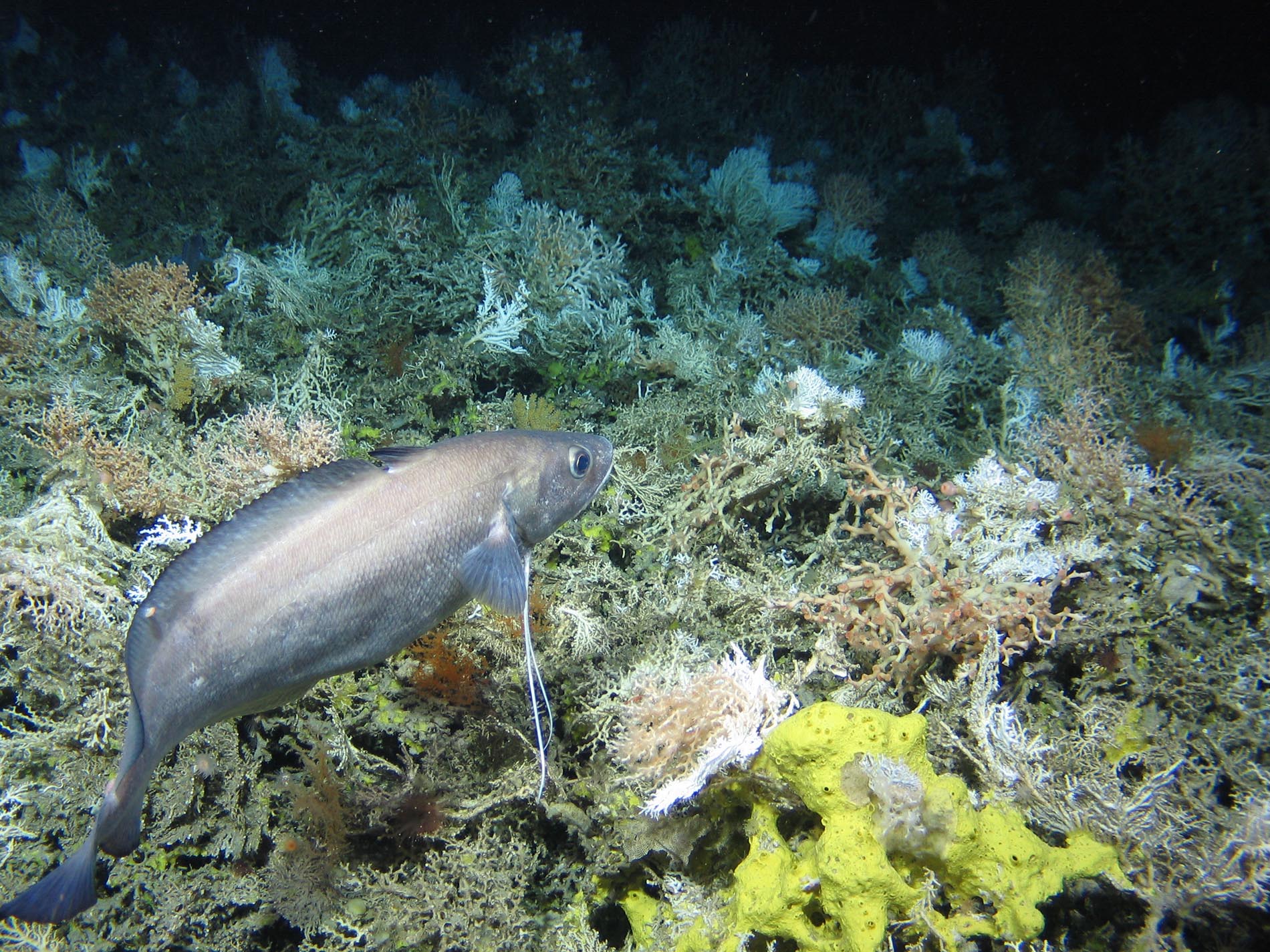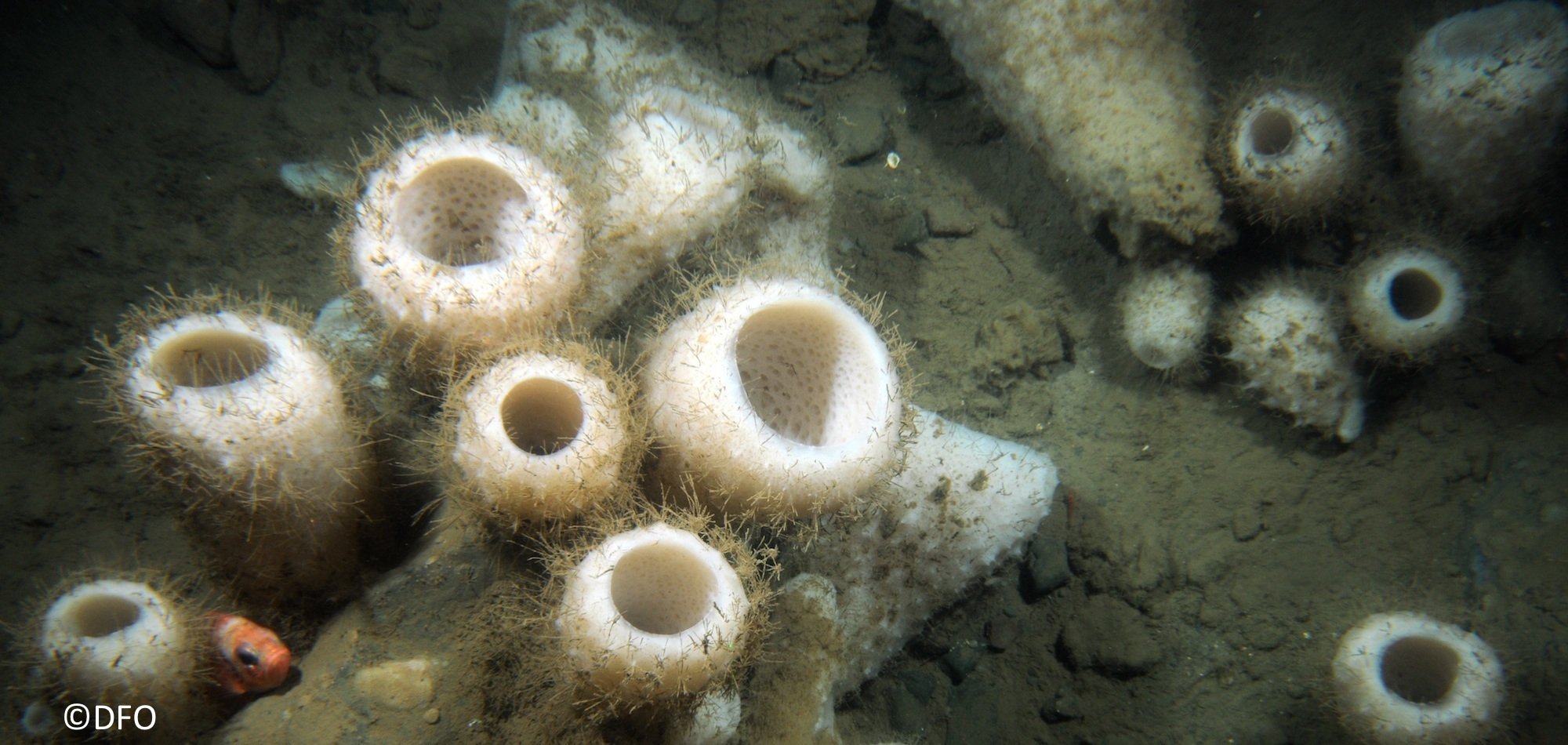Little is known about deep ocean environments. But scientists focussing on the depths of the North Atlantic are now learning more about their ecosystems – including the role of vast sea sponge grounds – and how to safeguard them against the effects of climate change and industry.
Deep-sea sponges – aquatic invertebrates that spend their lives attached to the seabed and are found in almost all areas of the deep ocean – have been particularly neglected when it comes to research and conservation. But they are an important component of their ecosystems.
‘Given their huge filtering capacity and their pronounced role in pumping and cleaning the ocean, sponge grounds have an effect on ocean health,’ said Professor Hans Tore Rapp from the University of Bergen in Norway.
But studying sponges is not easy. Found at depths of up to 4,000 metres, sponges are hard to access and most cannot handle exposure to air which makes it difficult to conduct lab experiments.
Telling species apart is tricky too because many have limited distinguishing features. ‘Nowadays a combination of morphological information and DNA has made things a bit easier but it is still a challenging and very time-consuming task,’ said Prof. Rapp.
Professor Rapp and his colleagues are identifying different species for a wide-ranging project called SponGES. The scientists are investigating sponges’ ecological functions, how these animals can be used in biotechnology as well as the resilience of their ecosystems.
‘We will be using modelling tools to look into the future, to see how these sponge grounds will be impacted by climate change or any kind of stressors,’ said Prof. Rapp.

Sponge genomes
So far, the scientists have discovered more than 30 new species of sponges and produced the largest sponge genomic data sets ever, which should reveal how different species and populations are related. They also performed experiments in the lab to investigate their ecosystem functions, such as how they absorb and turn carbon and inorganic nutrients like nitrogen and phosphorus into nourishment for the rest of the habitat.
Now they are conducting experiments on the seafloor. ‘(We are) looking at sponges in pristine areas then comparing how they function in areas that are more impacted, whether it’s from oil and gas or mining,’ said Prof. Rapp.
The project is also taking a novel approach to drug discovery. The chemicals that sponges use to defend themselves could potentially be used to treat cancer and infectious diseases.
Sponges are typically ground up and tested to identify compounds that could be used to develop drugs. The project, however, is trying to zero in on the genes involved in making these compounds so that it can sustainably produce them in the lab.
‘We’ve already identified some of the gene sequences that are related to the production of anti-cancer compounds,’ said Dr Shirley Pomponi from Florida Atlantic University in the US and Wageningen University in the Netherlands, who is leading the biotechnology arm of the project.
Dr Pomponi and her project colleagues are also one step closer to creating bone implants that make use of sponge architecture. Sponges produce microscopic skeletal elements, or spicules, made of biosilica that are the building blocks of their structures. Biosilica has been found to induce bone-forming cells to produce more bone. The scientists therefore hope to make implant scaffolds with bone-forming cells.
They achieved a breakthrough by creating a cell line in the lab from deep-sea sponge cells, which Dr Pomponi claims is the first time this has been done for any marine invertebrate.
Dr Pomponi says the cell lines are exciting as they will enable the scientists to study how sponges produce their skeletons as well as their defensive chemicals. The team is focussing on how to produce biosilica and these chemicals in tissue culture, she says.
Endangered
Results from the project are already being recognised by policymakers too. Sponge grounds have now been included in the Norwegian Red List for endangered habitats, for example.
‘We are now also contributing to getting sponge grounds into the management plan for the Nordic Seas,’ said Prof. Rapp.
‘We will be using modelling tools to look into the future, to see how these sponge grounds will be impacted by climate change or any kind of stressors.’
-Prof. Rapp, University of Bergen, Norway
In addition to sponges, other elements of deep North Atlantic ocean ecosystems need to be better understood. To tackle this, a project called ATLAS is undertaking the biggest assessment of the area to date.
The deep Atlantic is home to a number of vulnerable ecosystems, says Professor Murray Roberts from the University of Edinburgh in the UK, the project coordinator.
‘We need to understand the corals, the sponges, the clams, we need to understand the seamounts,’ he said.
‘And critically we need to understand how industry active in these areas already, and proposing to increase its operations, could impact these systems.’
The project is monitoring the deep ocean by using climate-monitoring instruments, along with new equipment such as sensor arrays to measure carbon dioxide and acidity to provide regular readings for the first time which will be made publicly available.
The new information will help to better understand the physics of the ocean such as circulation patterns, for example, so that changes can be predicted.
The project has published 49 scientific papers, revealing, for example, how corals on the seafloor are nourished in an environment where there is little food available.
Simulations showed that water currents interact with coral mounds, which can grow hundreds of metres tall to draw organic matter down to them from the surface.
‘It’s an amazing example of ecosystem engineering on a scale we’ve never really seen before,’ said Prof. Roberts. The scientists will follow up by taking measurements in the field to see if they agree with their model.

Fisheries
Another aspect of the project involves bringing together different sectors that use the ocean, such as fisheries and oil and gas companies, to plan out marine space in a more sustainable way. ‘It’s like town planning in a sense for the oceans,’ said Prof. Roberts.
The team’s goal is to make sure that ocean activities are sustainable and that ecosystems are preserved.
They have been working with multinational oil and gas companies, for example, to assess the areas in which they operate, where there are vulnerable ecosystems such as sponge grounds and coral reefs. The impact of climate change also needs to be addressed.
‘With warming of the Atlantic Ocean and gradual acidification, areas that have been protected are going to end up as unsuitable for the very things that they’ve been closed to protect,’ said Prof. Roberts.
Based on scientific findings from the project, the team plans to come up with management strategies for sectors such as deep-sea mining and renewable energy where growth is forecast. The team also developed new models showing the distribution of deep Atlantic species which will provide a good starting point.
‘We have a much better understanding of how likely it is that vulnerable species occur in areas that industries are looking to exploit,’ said Prof. Roberts. ‘We’re (now) taking that into industry and policy.’
Sponges: survivors of the sea
Sixteenth-century naturalists considered sea sponges to be plants, they are actually animals that live attached to surfaces in tidal zones or areas as deep as 8,500 metres.
Sea sponges are filter feeders that can survive for long periods without food, such as during the lightless polar winters. Some sponges can also live for hundreds of years. A specimen the size of a minivan, believed to be centuries to millennia old, was discovered 2,100 metres below the ocean surface in Hawaii in 2016.
Sponge cells are like stem cells – sponges can regenerate an entire body from just one cell. Sponges themselves have no internal organs. Instead, their entire body processes oxygen and nutrients.
Most sponges feed and breathe by extracting nutrients and oxygen floating in the water. Water enters a sponge’s pores and passes through the intricate canals and chambers that form its body. Special cells lining the inside of a sponge’s body capture food particles and keep the water constantly circulating.
About 140 species of known sponges – most of them deep-sea dwellers – are carnivorous. They trap tiny crustaceans and larvae with microscopic hooks and digest them – cell by cell – over several days.
The research in this article was funded by the EU. If you liked this article, please consider sharing it on social media.

